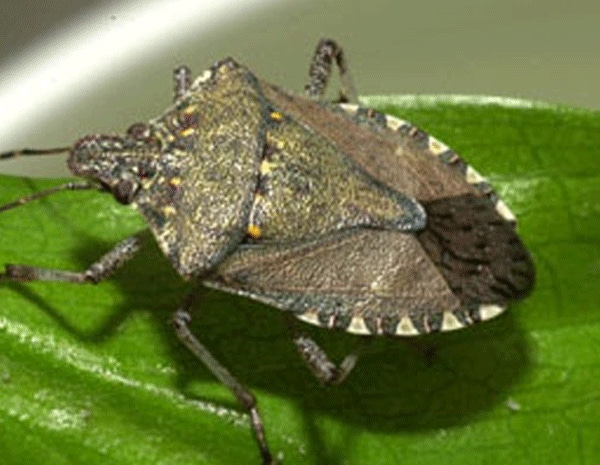
Mid-Atlantic states target brown marmorated stink bug
• The brown marmorated stink bug has quickly become a major pest to farmers and homeowners in West Virginia’s eastern panhandle and in neighboring states.• Most experts believe the new use for an existing chemical could be a strong tool for dealing with BMSB.
May 10, 2011

The West Virginia Department of Agriculture (WVDA) has added its voice to that of Virginia Tech University scientists and experts at the U.S. Department of Agriculture (USDA) requesting that the U.S. Environmental Protection Agency (EPA) approve the use of dinetefuran in orchards in the mid-Atlantic region of the country.
The insect it would target is the brown marmorated stink bug (BMSB), a variety of stinkbug that was first identified in Allentown, Pa., in 2001, and has quickly become a major pest to farmers and homeowners in West Virginia’s eastern panhandle and in neighboring states.
Commissioner of Agriculture Gus R. Douglass said BMSB is one of the worst pests he has ever seen.
“Like most invasive species, this variety of stink bug has no natural predators,” Commissioner Douglass said. “Some fruit growers reported as much as an 80 percent loss on their crop last year, and there’s no reason to believe that this year will be much different unless we can find some effective means to control this insect.”
EPA currently allows the use of dinetefuran on vegetables, grapes and cotton and it is sprayed on orchards in Japan. However, it has not yet been approved for orchard use in the United States.
BMSB also becomes a major headache for homeowners in the fall when the insects move indoors in huge numbers to seek protection from the cold weather. True to its name, BMSB emits a strong odor, especially when alarmed.
Research is ongoing at universities in the region and at the USDA Agricultural Research Center in Bardane and at the WVU Extension Service Tree Fruit Research Center in Kearneysville, both in West Virginia’s eastern panhandle.
However, most experts believe the new use for an existing chemical could be a strong tool for dealing with BMSB.
“We’re hoping we can get approval by mid-August when the fruits are larger and more of the damage occurs,” said Grant Bishop, who manages WVDA’s pesticide regulatory program.
BMSB feeds on peaches, apples, blackberries, sweet corn, field corn and soybeans — along with approximately 300 other host-plant species. BMSB pierces the skin of fruit and sucks the juice from inside, causing dimpling and rot.
Fruit damaged by the Asian stinkbug typically is not destroyed, but it must be diverted to the processing market, yielding growers about one-tenth the income they would have received on the fresh-fruit market.
A fruit industry group estimates apple losses reached $37 million in 2010 from BMSB for mid-Atlantic apple growers.
For more information, visit http://www.wvagriculture.org.
You May Also Like



